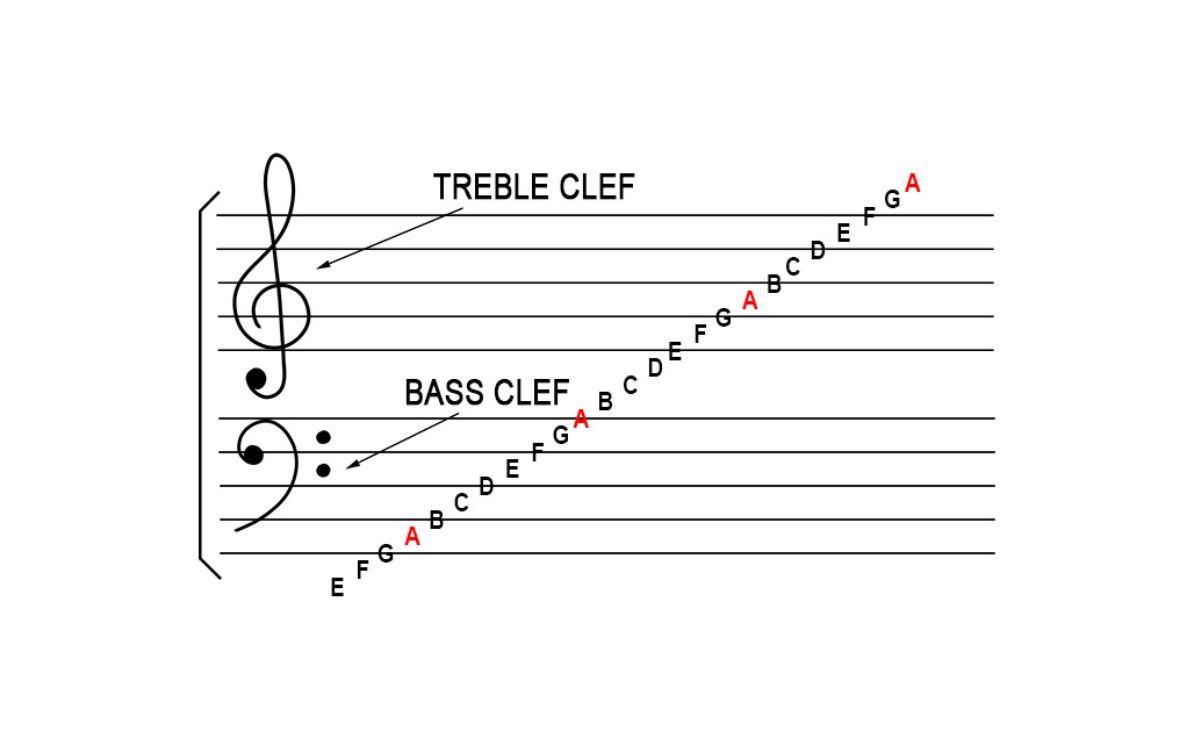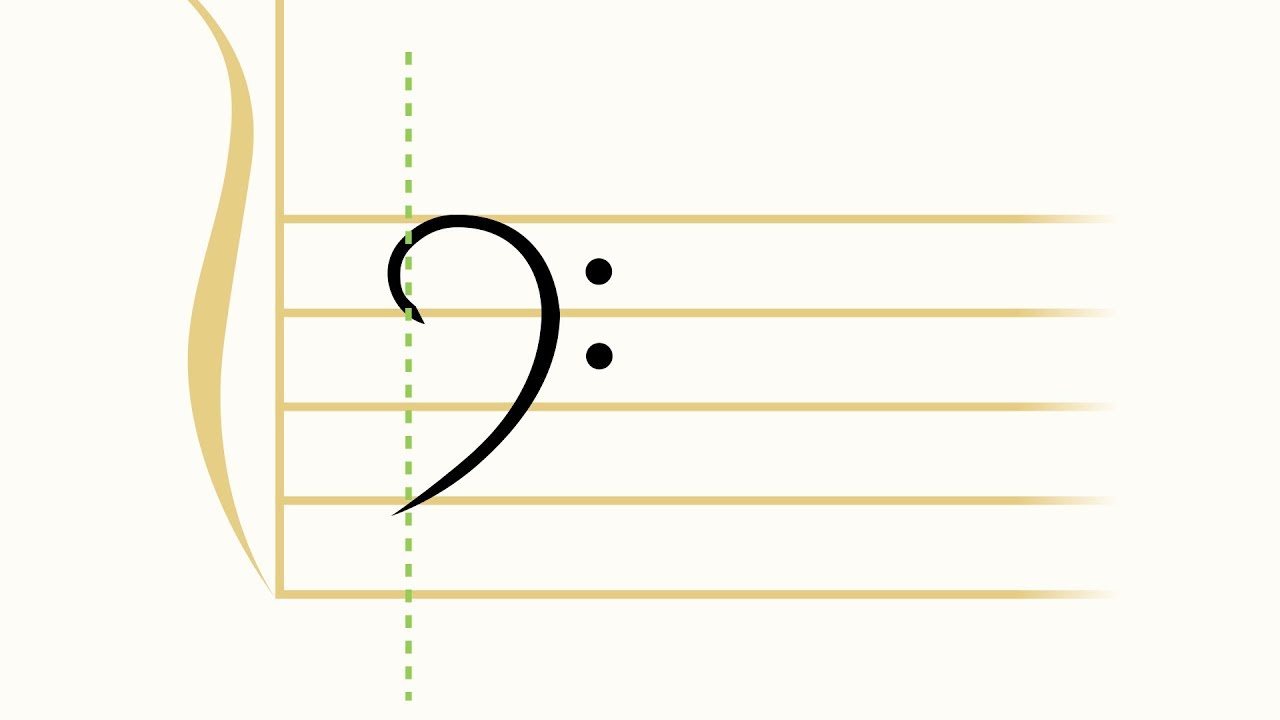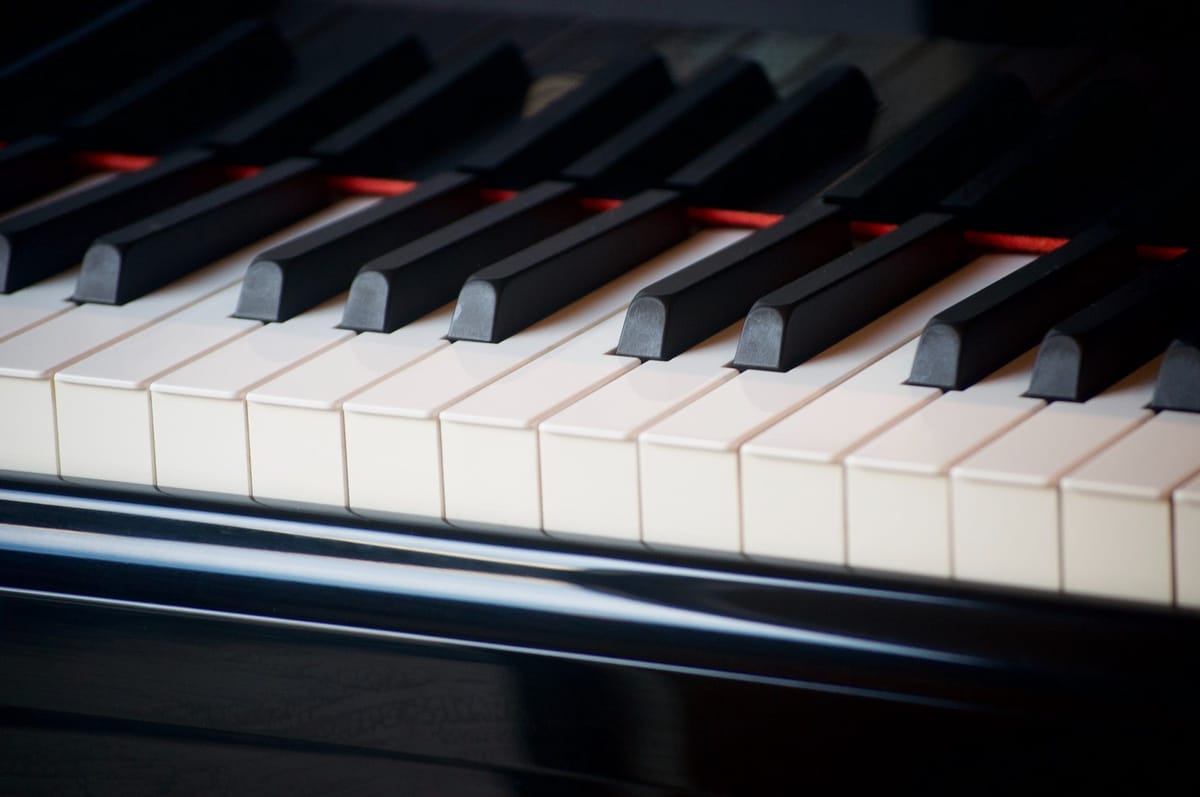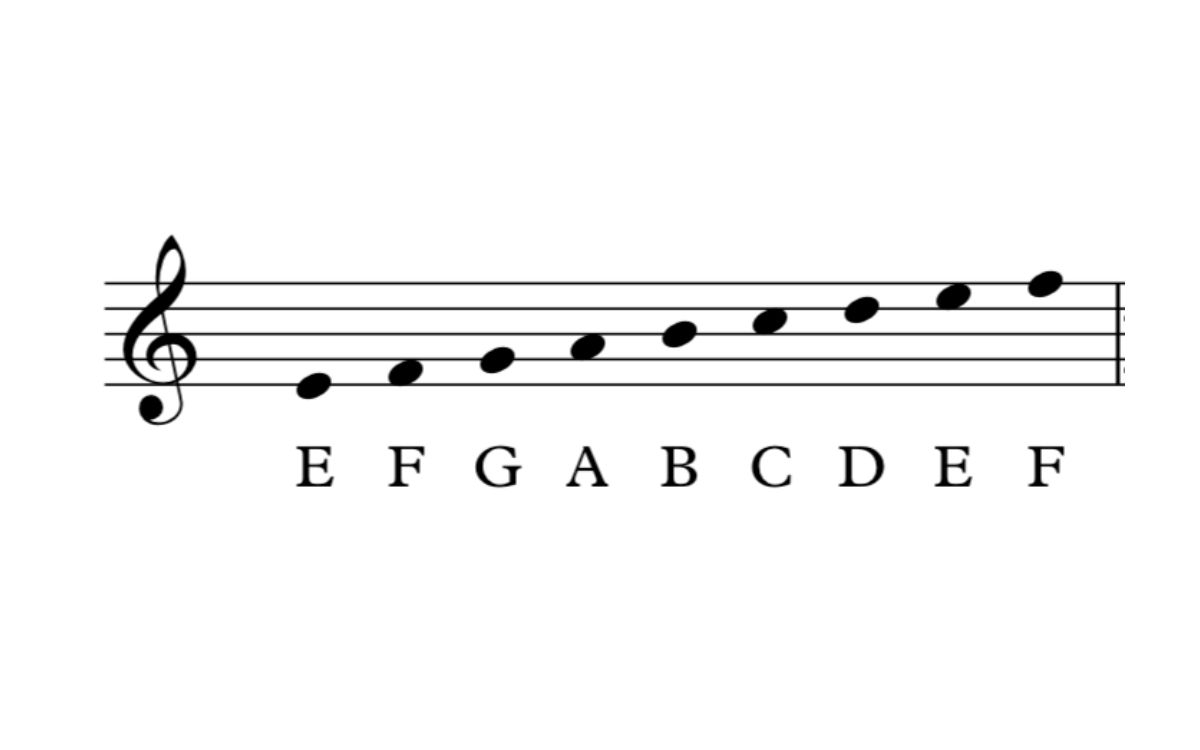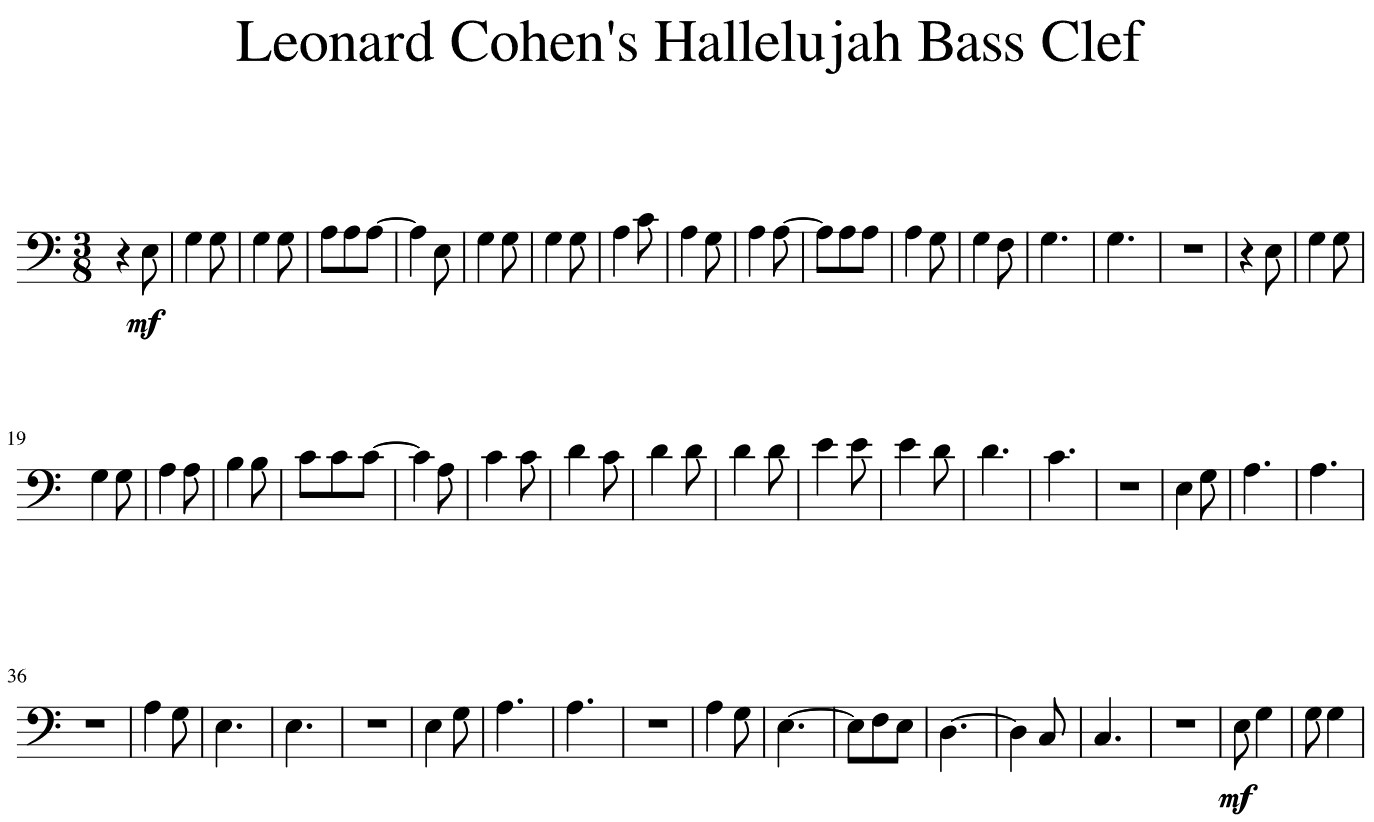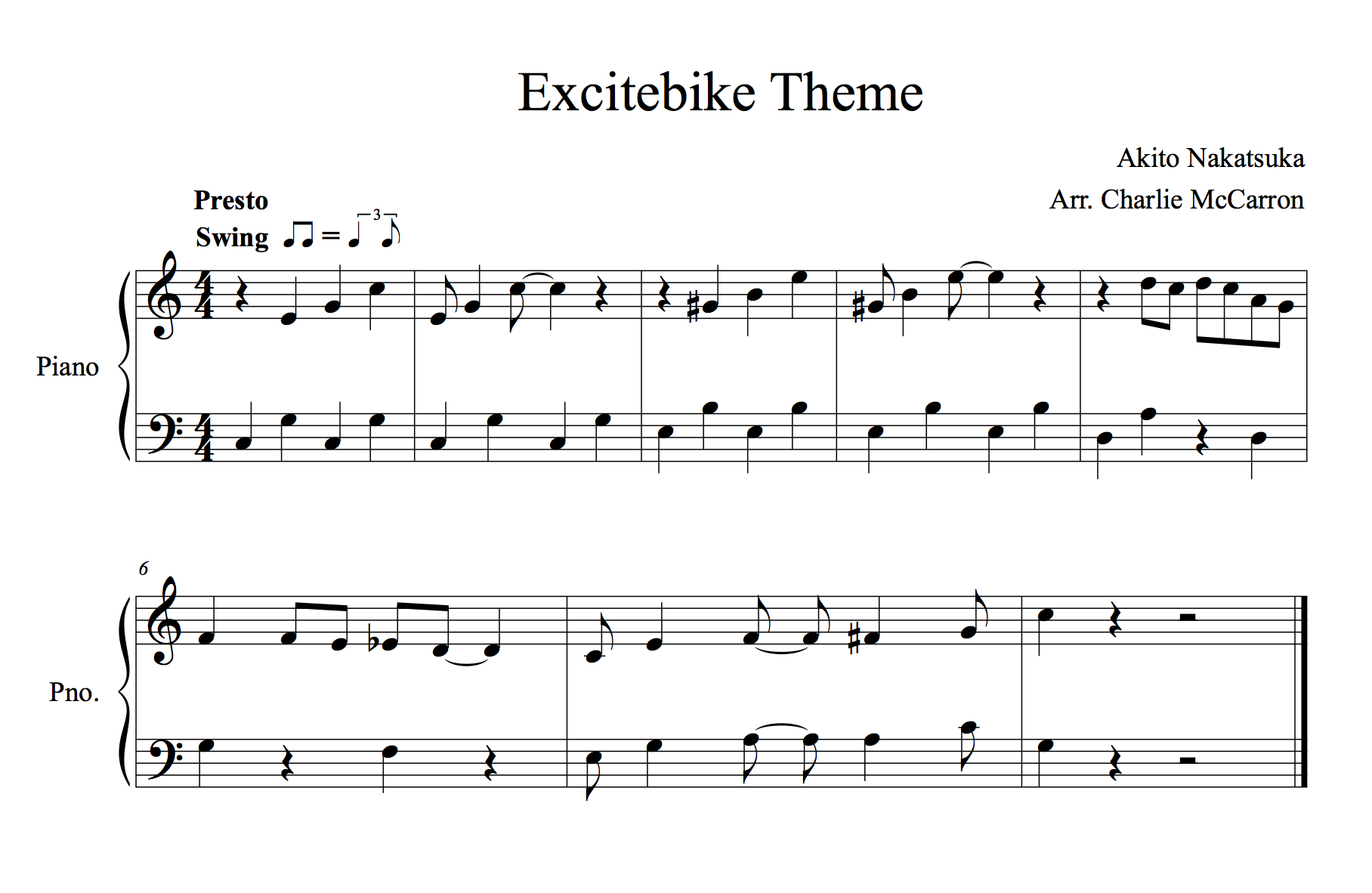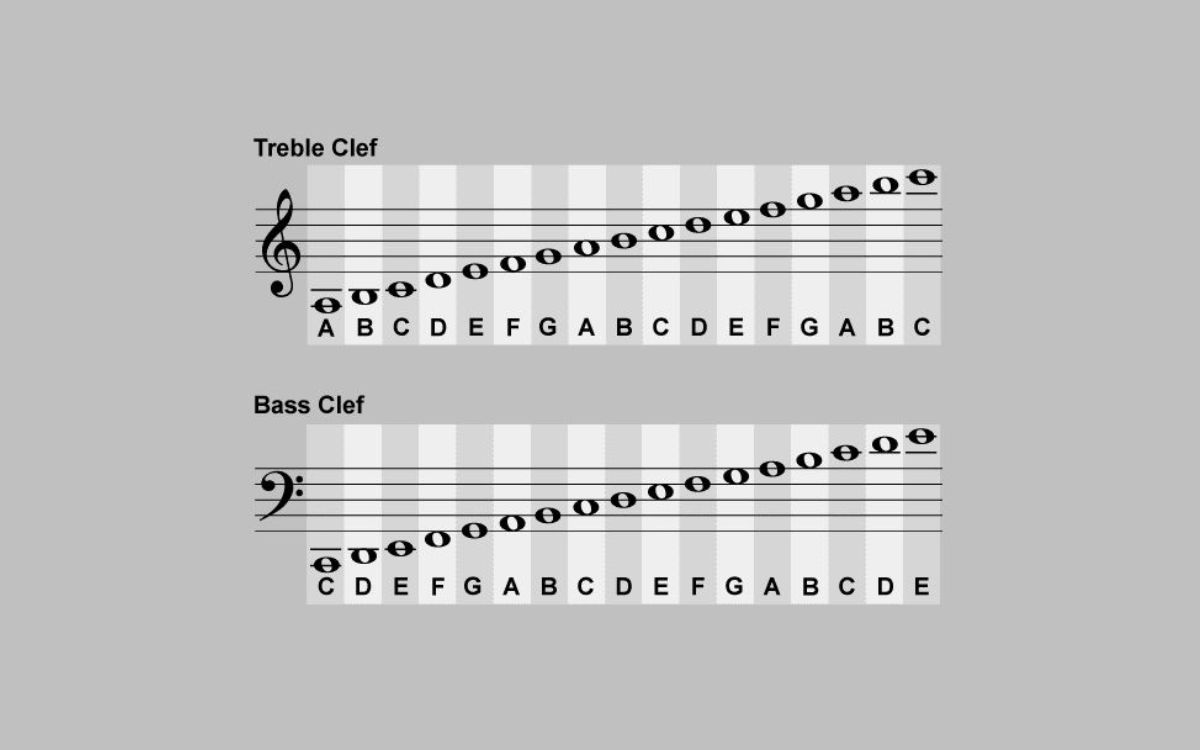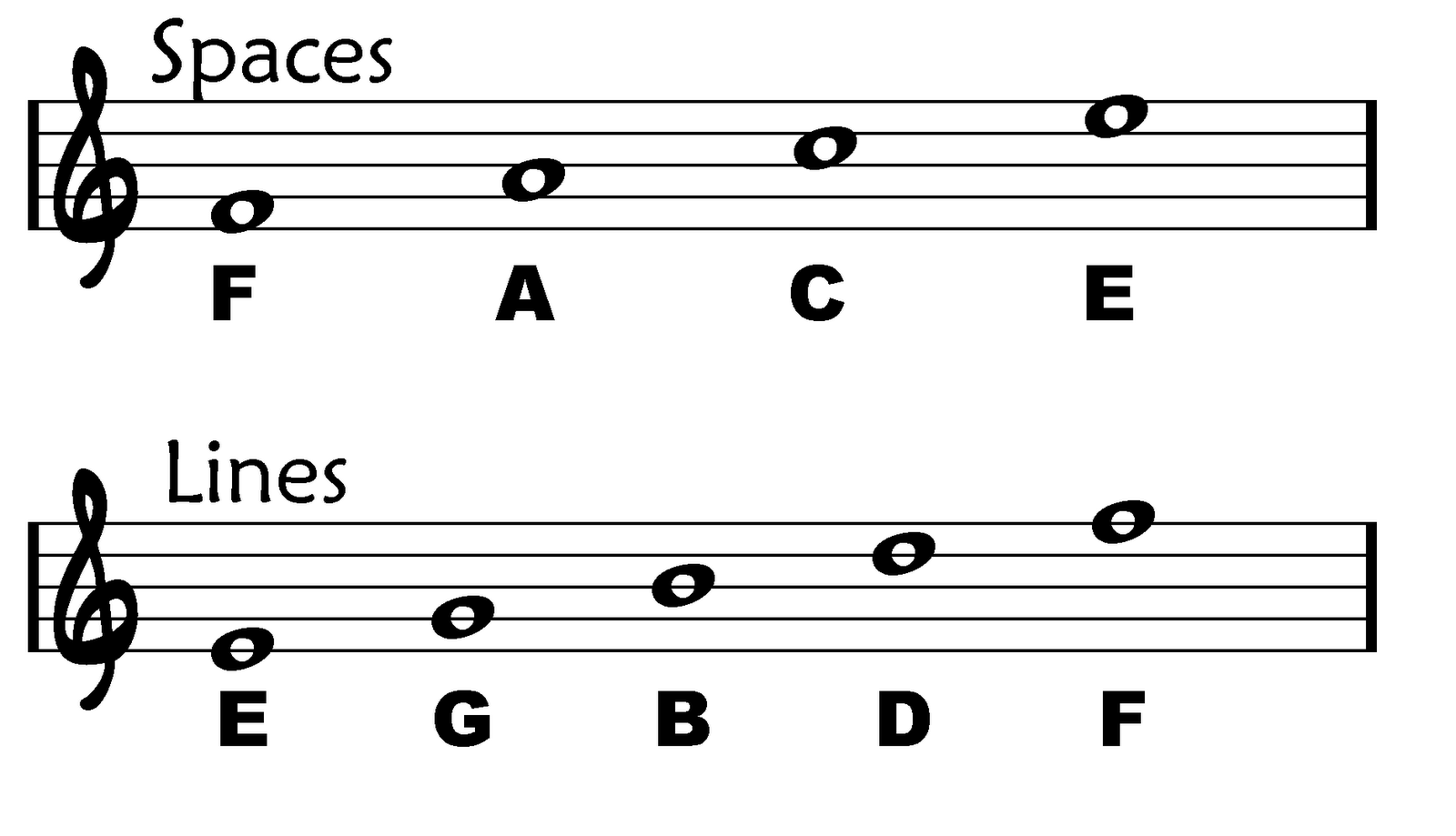Home>Instruments>Bass>What Are The Notes On The Bass Clef


Bass
What Are The Notes On The Bass Clef
Modified: January 22, 2024
Learn the notes on the bass clef with our comprehensive guide. Master the fundamentals of playing the bass guitar and unlock your musical potential.
(Many of the links in this article redirect to a specific reviewed product. Your purchase of these products through affiliate links helps to generate commission for AudioLover.com, at no extra cost. Learn more)
Table of Contents
- Introduction
- Overview of the Bass Clef
- Understanding Musical Notation
- The Importance of Notes on the Bass Clef
- Identifying the Notes on the Bass Clef Staff
- Memorizing the Notes on the Bass Clef
- Common Mnemonic Devices for Remembering Bass Clef Notes
- Tips for Practicing and Mastering Bass Clef Notes
- Conclusion
Introduction
Welcome to the world of bass music! Whether you’re a beginner learning to play the bass guitar or a seasoned musician exploring the depths of low frequencies, understanding the bass clef is essential. The bass clef is a foundational element of musical notation that provides a framework for reading and playing bass lines, melodies, and chords.
As the name suggests, the bass clef is primarily used for instruments that play in the lower register, such as bass guitars, double basses, tubas, and trombones. It is distinguishable by its unique symbol—a stylized letter “F” with two dots on either side—positioned on the music staff.
In this article, we’ll explore the world of the bass clef and dive into the importance of recognizing and understanding the notes displayed on it. By the end, you’ll have a solid foundation for reading and playing bass music, and you’ll be equipped with valuable mnemonic devices and practice tips to help you master the bass clef and its notes.
So, let’s jump right in and explore the fascinating world of the bass clef and its notes!
Overview of the Bass Clef
The bass clef, also known as the F clef, is one of the two main clefs used in Western musical notation. It is primarily used to notate music for instruments that play in the low register, such as the bass guitar, double bass, and tuba. The bass clef is characterized by its distinctive symbol—a stylized letter “F” with two dots placed on either side of the fourth line of the music staff.
One of the key purposes of the bass clef is to assign specific pitch names to the lines and spaces of the staff. The lines of the bass clef staff, from bottom to top, represent the following pitches: G, B, D, F, and A. The spaces, from bottom to top, represent the pitches: A, C, E, and G. These pitch names, combined with information on the position of notes on the staff, provide musicians with the necessary information to play the correct pitches.
Aside from pitch representation, the bass clef also indicates important musical elements such as key signatures, dynamics, and articulations. Key signatures are symbols placed at the beginning of a staff that indicate the key in which a piece of music is to be played. Dynamics, represented by symbols like “piano” (soft) and “forte” (loud), instruct musicians on the appropriate volume at which to play. Articulations, represented by symbols like staccato dots or slurs, indicate how notes should be played in terms of duration and expression.
The bass clef is an essential tool for bass players and composers. It allows them to notate and read music accurately, providing a common language for musicians to communicate and perform together. Understanding the bass clef and its role in musical notation is a valuable skill that opens up a world of possibilities for bass players and music enthusiasts.
In the next section, we will delve deeper into the fundamentals of musical notation and explore how notes are represented on the bass clef staff.
Understanding Musical Notation
Musical notation is the system of writing and reading music. It consists of various symbols and notations that convey pitch, rhythm, dynamics, and other musical elements. Understanding musical notation is crucial for musicians to accurately interpret and perform the music written on the page.
The bass clef staff, which consists of five lines and four spaces, serves as the foundation for representing the pitches in musical notation. Each note on the bass clef staff is indicated by the placement of its notehead either on a line or in a space. The higher the note is placed on the staff, the higher the pitch it represents.
In addition to the note placement, the pitch of a note on the bass clef is determined by the position of the notehead relative to the five lines and four spaces. The pitches of the lines, from bottom to top, are G, B, D, F, and A, while the pitches of the spaces, from bottom to top, are A, C, E, and G.
To further specify the duration of a note, musical notation utilizes different types of note values. These note values indicate the relative length of time each note should be played. The most commonly used note values in bass music include whole notes, half notes, quarter notes, eighth notes, and sixteenth notes. Additional symbols such as rests indicate periods of silence or pauses in the music.
Accidentals, also known as sharps (#) and flats (♭), are essential symbols in musical notation. They modify the pitch of a note by raising or lowering it by a half step. Accidentals are indicated by symbols placed before a note or within a measure and can change the pitch of a note for the entire measure or specific occurrences of the note.
Understanding musical notation allows bass players to accurately read, interpret, and perform music written for the bass clef. By understanding the placement of notes, note values, accidentals, and other musical symbols, musicians can bring the music to life and convey the composer’s intentions.
Next, we will explore the importance of recognizing and understanding the notes displayed on the bass clef staff.
The Importance of Notes on the Bass Clef
Understanding and recognizing the notes on the bass clef is of utmost importance for any bass player. When you can effectively read and identify the notes on the bass clef staff, you gain the ability to play songs accurately, improvise bass lines, and even compose your own music.
The bass clef serves as a roadmap for bass players, indicating which notes to play during a musical piece. By being able to quickly identify the notes on the staff, you can navigate through the music effortlessly, knowing exactly where to place your fingers on the instrument’s fretboard.
Furthermore, recognizing the notes on the bass clef allows you to communicate and collaborate with other musicians more effectively. When playing with a band or in an ensemble, being able to quickly understand the musical notations and communicate your musical ideas based on the notes becomes crucial. It ensures that everyone is on the same page and can bring their unique musical contributions together harmoniously.
Moreover, understanding the notes on the bass clef enhances your ability to sight-read music. Sight-reading involves reading and performing a piece of music on the spot, without prior rehearsal. This skill is particularly valuable in situations where you may be required to perform with little to no preparation time. By having a solid grasp of the notes on the bass clef, you can confidently navigate through the music and make a convincing performance.
Additionally, recognizing the notes on the bass clef opens up opportunities for creating bass lines and improvising. When you can identify the notes on the staff, you can experiment with different chord progressions, scales, and arpeggios, allowing you to add your unique flair to the music. This ability to improvise and come up with creative bass lines is essential for solo performances and jam sessions, where you need to think on your feet and respond to the music in real-time.
In essence, understanding the notes on the bass clef empowers you as a bass player. It provides you with the foundation to play music accurately, collaborate with other musicians effectively, sight-read music confidently, and express your creativity through improvisation. The notes on the bass clef are the building blocks of your musical journey, and by mastering them, you can unlock a world of possibilities in the world of bass.
Now that we understand the importance of notes on the bass clef let’s dive into how to identify and memorize them on the staff.
Identifying the Notes on the Bass Clef Staff
Identifying the notes on the bass clef staff is a fundamental skill for any bass player. The bass clef staff consists of five lines and four spaces, each representing a specific note. By understanding the position of the notes on the staff, you can accurately read and play the music written for the bass clef.
Starting from the bottom line of the bass clef staff, the notes on the lines are G, B, D, F, and A. The mnemonic device commonly used to remember these notes is “Good Boys Do Fine Always.” By associating these words with the first letter of each note, you can easily recall the names of the notes in order.
Similarly, the notes on the spaces of the bass clef staff, from bottom to top, are A, C, E, and G. The mnemonic device for remembering these notes is “All Cows Eat Grass.”
One helpful technique for identifying the notes on the bass clef staff is to practice with flashcards or note quizzes. Create flashcards with the note names and their positions on the staff, and quiz yourself regularly. This will help you develop quick recognition and familiarity with the notes on the bass clef.
It’s also essential to understand that notes can move up or down the staff by using ledger lines. Ledger lines are small lines placed above or below the staff to extend its range. When encountering ledger lines, it’s important to know the letter names of the notes and how they correspond to the position of the lines or spaces.
Additionally, learning to read intervals between notes on the bass clef staff is crucial. Intervals refer to the distance between two notes, and understanding them helps you read music more fluently and play melodies accurately. Practice identifying intervals on the staff, such as thirds, fourths, fifths, and so on, to improve your note recognition skills.
Lastly, it’s important to note that reading music is not just about identifying individual notes but also about understanding the overall context. Pay attention to key signatures, time signatures, and other symbols on the staff that provide additional information about the music you’re playing.
By practicing regularly and familiarizing yourself with the position of notes on the bass clef staff, you will gradually become more proficient in identifying notes and reading music accurately. This skill is essential for navigating through songs, improvising bass lines, and collaborating with other musicians.
Next, we’ll explore mnemonic devices that can help you memorize the notes on the bass clef staff more easily.
Memorizing the Notes on the Bass Clef
Memorizing the notes on the bass clef staff is an important step towards becoming a proficient bass player. While it may seem daunting at first, there are several effective methods and mnemonic devices that can help you commit the notes to memory.
One popular mnemonic device for remembering the notes on the lines of the bass clef staff is “Good Boys Do Fine Always.” The first letter of each word corresponds to the note names in order from bottom to top: G, B, D, F, and A. By repeating this phrase and associating it with the notes, you can quickly recall their names and positions on the staff.
For the notes on the spaces of the bass clef staff, the mnemonic device “All Cows Eat Grass” is commonly used. Again, the first letter of each word corresponds to the note names in order from bottom to top: A, C, E, and G. This phrase serves as a useful tool for memorizing the notes and their positions on the spaces.
Flashcards and note quizzes are also effective tools for memorization. Create flashcards with the note names and their positions on the staff, and practice identifying them. Quiz yourself regularly and challenge your memory to recall the notes quickly. Repetition and consistent practice will solidify your understanding of the notes on the bass clef.
Another technique for memorizing the notes on the bass clef is to associate each note with a visual image or a phrase that represents its position on the staff. For example, you can imagine the line note “G” as a green tree growing from the bottom line of the staff, or the space note “C” as a cat sitting on a space between the lines. These visual associations can make the memorization process more engaging and memorable.
It’s important to remember that memorizing the notes on the bass clef is an ongoing process that takes time and practice. Be patient with yourself and celebrate small victories as you progress. Regular practice and exposure to bass clef notation will gradually strengthen your ability to recognize and recall the notes more naturally.
As you continue to explore and play music in the bass clef, you will find that your memorization and understanding of the notes will improve. You will become more confident in reading sheet music, navigating through songs, and expressing yourself through the bass guitar or other bass instruments.
Next, we’ll explore some common mnemonic devices that can further aid you in remembering the notes on the bass clef staff.
Common Mnemonic Devices for Remembering Bass Clef Notes
Memorizing the notes on the bass clef staff can be made easier with the help of mnemonic devices. Mnemonic devices are memory aids that use associations, patterns, or rhymes to facilitate the retention of information. Here are some commonly used mnemonic devices for remembering the notes on the bass clef:
1. Good Boys Do Fine Always (GBDFA): This phrase corresponds to the note names on the lines of the bass clef staff from bottom to top – G, B, D, F, and A. By repeating this phrase, you can quickly recall the names of these notes in the correct order.
2. All Cows Eat Grass (ACEG): This mnemonic represents the note names on the spaces of the bass clef staff from bottom to top – A, C, E, and G. Associating this phrase with the notes can help you remember the order and position of these notes.
3. Face: The word “face” can be used to remember the notes that reside in the spaces of the treble clef staff, but it can also be applied to the spaces of the bass clef staff. By using “face” as a mnemonic, you can easily recall the note names of the spaces – A, C, E.
4. The Circle of Fourths: The circle of fourths is a helpful mnemonic for remembering the order of the sharps in key signatures. It can also be used to remember the notes on the lines of the bass clef staff. Starting from the bottom line, the notes progress in intervals of fourths: G, C, F, B♭, and E♭. This pattern can assist in quickly recalling these note names.
5. Visual Associations: Creating visual images or associations for each note can aid in memorization. For example, you can imagine the note “G” as a tall tower leaning against the second line of the staff, or the note “D” as a dog lying down on the fourth line. These visual associations can help reinforce the connection between the note names and their positions on the staff.
Remember, mnemonic devices are simply tools to assist in the memorization process. Practice and repetition are still key factors in committing the notes to memory. Incorporate these devices into your regular study routine, and over time, recognizing and remembering the notes on the bass clef staff will become second nature.
In the next section, we’ll explore some practical tips for practicing and mastering the notes on the bass clef.
Tips for Practicing and Mastering Bass Clef Notes
Mastering the notes on the bass clef staff requires consistent practice and dedication. Here are some tips to help you effectively practice and improve your understanding of bass clef notes:
1. Start with the Basics: Begin by familiarizing yourself with the layout of the bass clef staff, including the lines and spaces. Practice identifying and naming each note on the staff, starting with the notes on the lines (GBDFA) and then moving on to the notes on the spaces (ACEG). Focus on accuracy and speed as you progress.
2. Use Flashcards and Quizzes: Create flashcards with the note names written on one side and their corresponding positions on the staff on the other side. Quiz yourself regularly by turning over the flashcards and identifying the notes. This method helps reinforce your memory and recognition of bass clef notes.
3. Practice Sight-Reading: Sight-reading is a valuable skill that involves reading and playing music on the spot. Challenge yourself with sight-reading exercises specifically designed for the bass clef. Start with simple melodies and gradually work your way up to more complex pieces. This will improve your ability to quickly identify and play the correct notes on the staff.
4. Play Along with Sheet Music: Choose songs or bass lines that are notated in the bass clef. Play along with the sheet music, focusing on accurately following the notes and rhythms. This will help you develop your reading skills and reinforce your understanding of bass clef notes in a practical context.
5. Practice Interval Recognition: Training your ear to recognize the intervals between notes can greatly assist in reading and understanding music. Practice identifying different intervals on the bass clef staff, such as thirds, fifths, and octaves. This will enhance your overall understanding of the musical structure and improve your ability to navigate through the staff.
6. Memorize Key Signatures: Key signatures indicate which pitches should be raised or lowered consistently throughout a piece. Familiarize yourself with the key signatures commonly used in bass music and practice identifying them on the staff. This will allow you to quickly recognize and anticipate the accidental notes in a given key.
7. Seek Guidance from a Teacher or Mentor: Consider taking lessons from a bass instructor or seeking guidance from more experienced bass players. They can provide personalized feedback, offer additional tips, and guide your practice routine, ensuring that you stay on the right track towards mastering bass clef notes.
Remember, consistent and focused practice is key to mastering the notes on the bass clef staff. Incorporate these tips into your routine, and over time, you will become more confident and proficient in reading and playing bass clef music.
Now that you have these tips at your disposal, go forth and continue your musical journey towards mastering the bass clef!
Please note that HTML tags and specific formatting may not be accurately reflected in the output as plain text.
Conclusion
Congratulations! You’ve reached the end of this comprehensive guide to understanding and navigating the world of bass clef notes. By learning the bass clef, you have gained a fundamental understanding of musical notation and an essential tool for playing bass instruments.
We explored the importance of recognizing and understanding the notes on the bass clef staff, as well as various mnemonic devices and practice tips to help you memorize and master the notes. Remember that learning the bass clef is an ongoing process that requires consistent practice, patience, and dedication.
By committing the notes to memory, you will be better equipped to read and interpret music, communicate with other musicians, and confidently navigate through songs. You will also gain the ability to create your own bass lines, improvise, and fully express yourself through the instrument.
As you continue your journey as a bass player, remember to consistently practice identifying the notes on the bass clef staff and challenge yourself with sight-reading exercises. Incorporate these skills into your regular routine to continually expand your knowledge and improve your musical abilities. Seek guidance from instructors or mentors, as their expertise and feedback will be invaluable in your growth.
Whether you’re a beginner just starting to explore the world of bass or an experienced musician looking to deepen your understanding, developing proficiency in reading and playing bass clef notes is essential. Embrace the challenge, enjoy the process, and make music come alive through your bass playing!
Now, armed with the knowledge and tools shared in this article, go out there and continue your musical journey with confidence, creativity, and a deep understanding of the bass clef.

